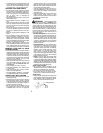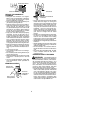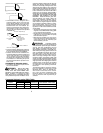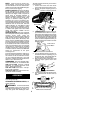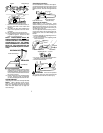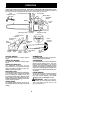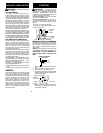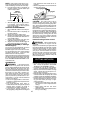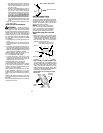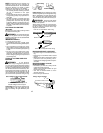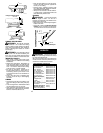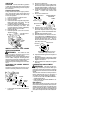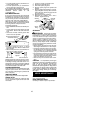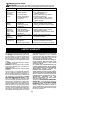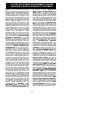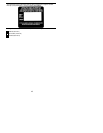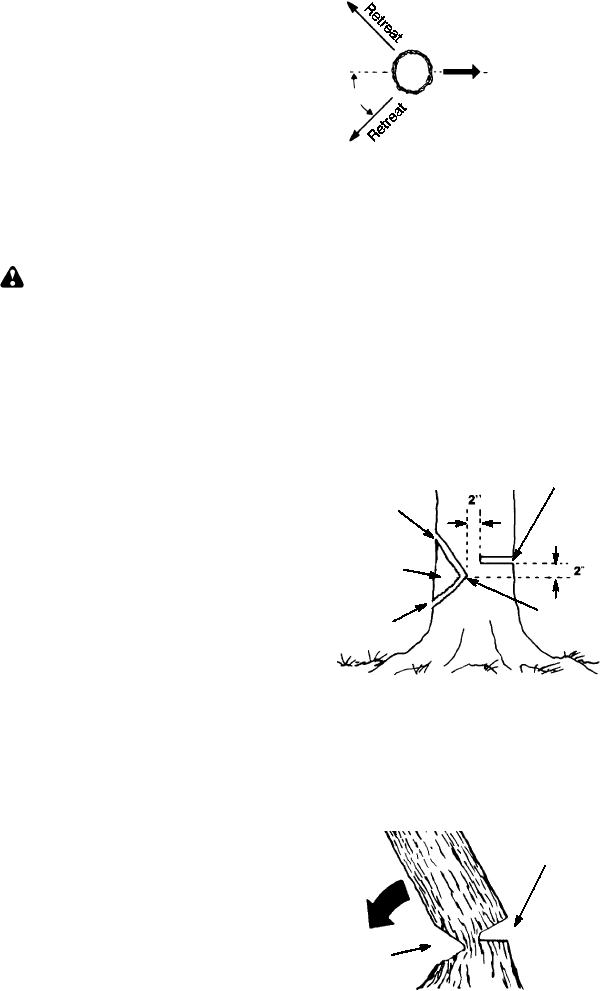
11
S
Allow thechaintocutforyou. Exertonly
light downward pressure. If you force
thecut, damagetothebar ,chain, oren-
gine can result.
S
Release the throttle trigger as soon as
the cut is completed, allowing the en-
gine to idle. If you run the saw at full
throttlewithout acuttingload,unneces-
sary wear can occur to the chain, bar ,
and engine. It is recommended that
the engine not be operated for lon-
ger than 30 secondsat full throttle.
S
Toavoidlosing c ontrolwhencutis com-
plete,donotputpressureonsaw atend
of cut.
S
Stop the engine before setting the saw
down after cutting.
TREE FELLING TECHNIQUES
W ARNING:
Check for broken or
dead branches which can fall while cutting
causing serious injury . Donotcut nearbuild-
ings or el ectrical wires if youdo notknow the
directionof treefall, norc utatnightsince you
will not be ale to see well, nor during bad
weathersuch asrain, snow, o rstrongwinds,
etc. If thetree makes contact with any utility
line, the utility company should b e notified
immediately.
S
Carefullyplan your sawingoperationinad-
vance.
S
Clear theworkarea. You needa cleararea
all aroundthetreeso you canhavesecure
footing.
S
The chain saw operator should keep on
the uphill side of the terrain as the tree is
likely toroll or slide downhill afteritisfelled.
S
Study the natural conditions that can cause
thetreetofallinaparticulardirection.
Natural conditions that can cause a tree to
fall in a particular direction include:
S
The wind direction and speed.
S
The lean of the tree. The lean of a tree
might not be apparent due to uneven or
sloping terrain. Use aplumb orlevel to de-
termine the direction of tree lean.
S
Weight and branches on one side.
S
Surrounding trees and obstacles.
Look for decay and rot. If thetrunk is rotted,
it can snap and fall toward the operator.
Check for broken or dead branches which
can fall on you while cutting.
Make sure there is enough roomfor the tree
to fall. Maintain a distance of
2-1/2
tree
lengths from thenearest person or other ob-
jects. Enginenoise candrownout awarning
call.
Remove dirt, stones, loose bark, nails, sta-
ples, andwire f romthe treewherecuts areto
be made.
Plana clear retreatpathto therear anddiag-
onal to the line of fall.
Direction of Fall
45
_
Plan a clear retreat path
FELLING LARGE TREES
(6 inches in diameter or larger)
The notch method is used to fell large trees.
A notc his cut on theside ofthetreein t hede-
sired direction of fall. After a felling cut is
made on the opposite side of tree, the tree
will tend to fall into the notch.
NOTE:
If the tree has large buttress
roots, remove them before making the
notch. If using saw to remove buttress
roots, keep saw chain from contacting
ground to prevent dulling of the chain.
NOTCH CUT AND FELLING THE
TREE
S
Make notch cut by cutting the top of the
notch first. Cut through
1/3
of the diameter
ofthetree.Nextcomplete thenotchbycut-
ting the bottom of the notch. See illustra-
tion. Once the notch is cut remove the
notch of wood from the tree.
Notch
First cut
Second cut
Final (felling) cut here. 2 in-
ches above center of notch.
Hinge
S
After removing the wood from the notch,
ma ke t he f elling cut on the op posite side of
thenotch. This is don eby making acut a bout
two inches higher than the center of the
notch. T his will leave enough uncut wood
b etween the felling cut and the not ch to form
a hinge. This hinge will help prevent the tree
from fa lling in the wr ong direct ion.
Opening
of felling
cut
Closing of
notch
Hinge holds tree on stump and helps
control fall



